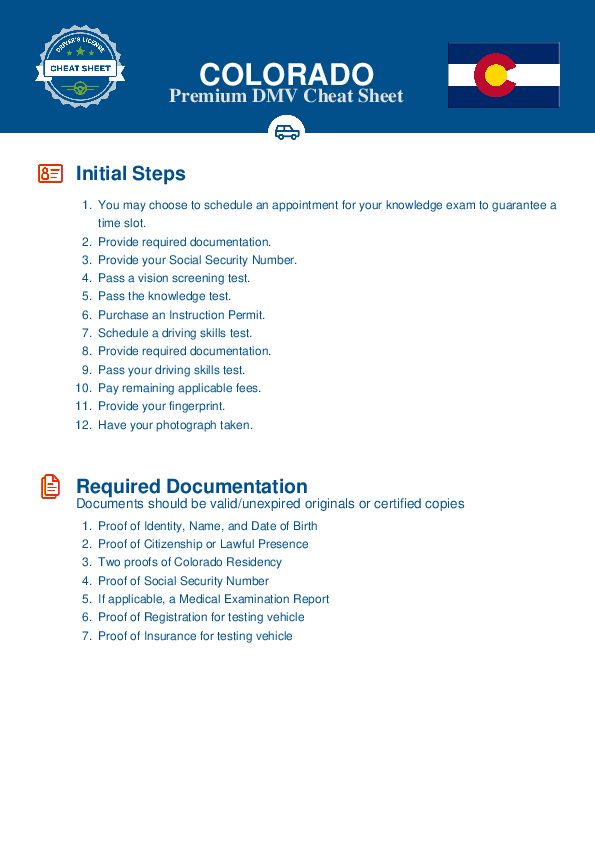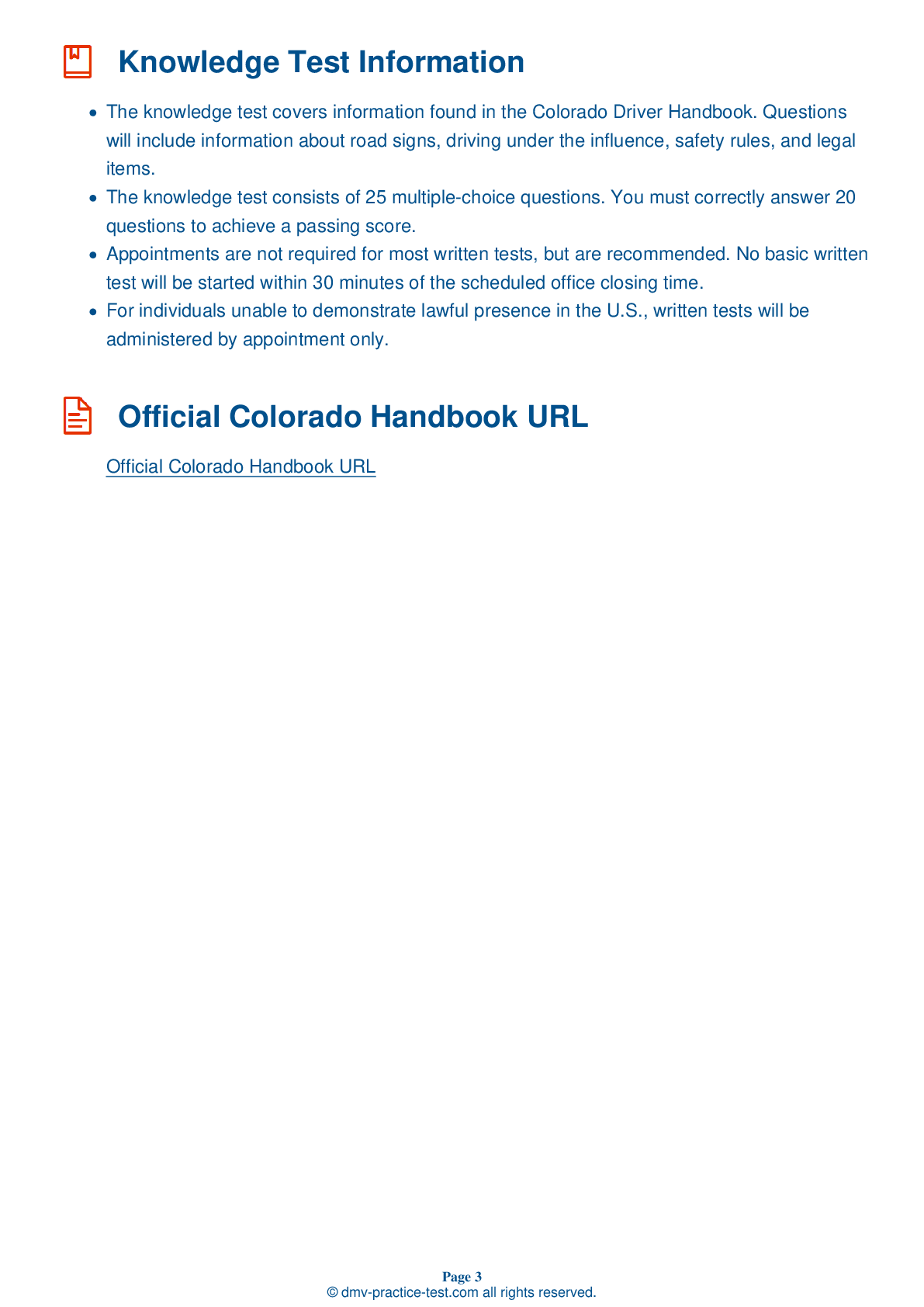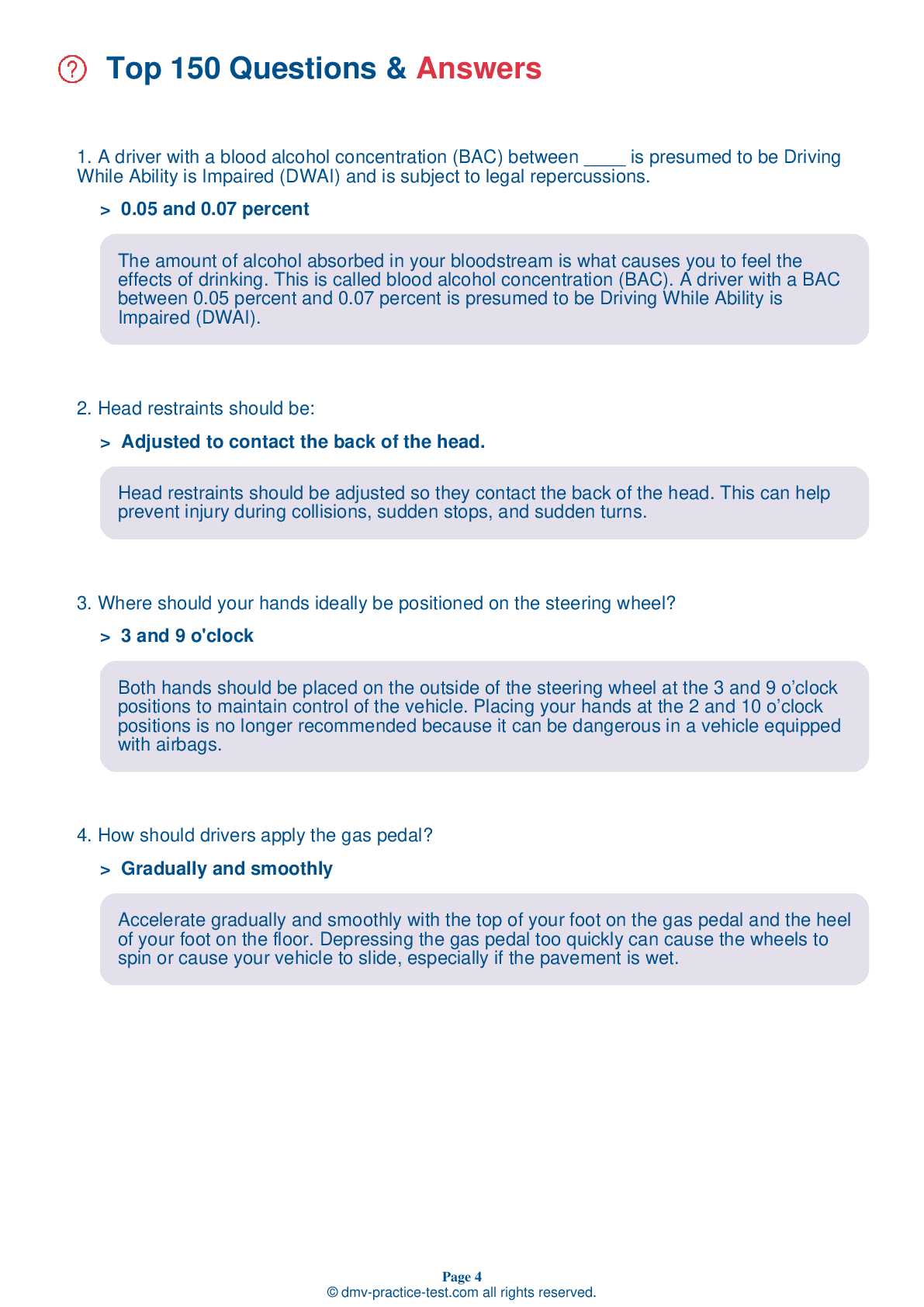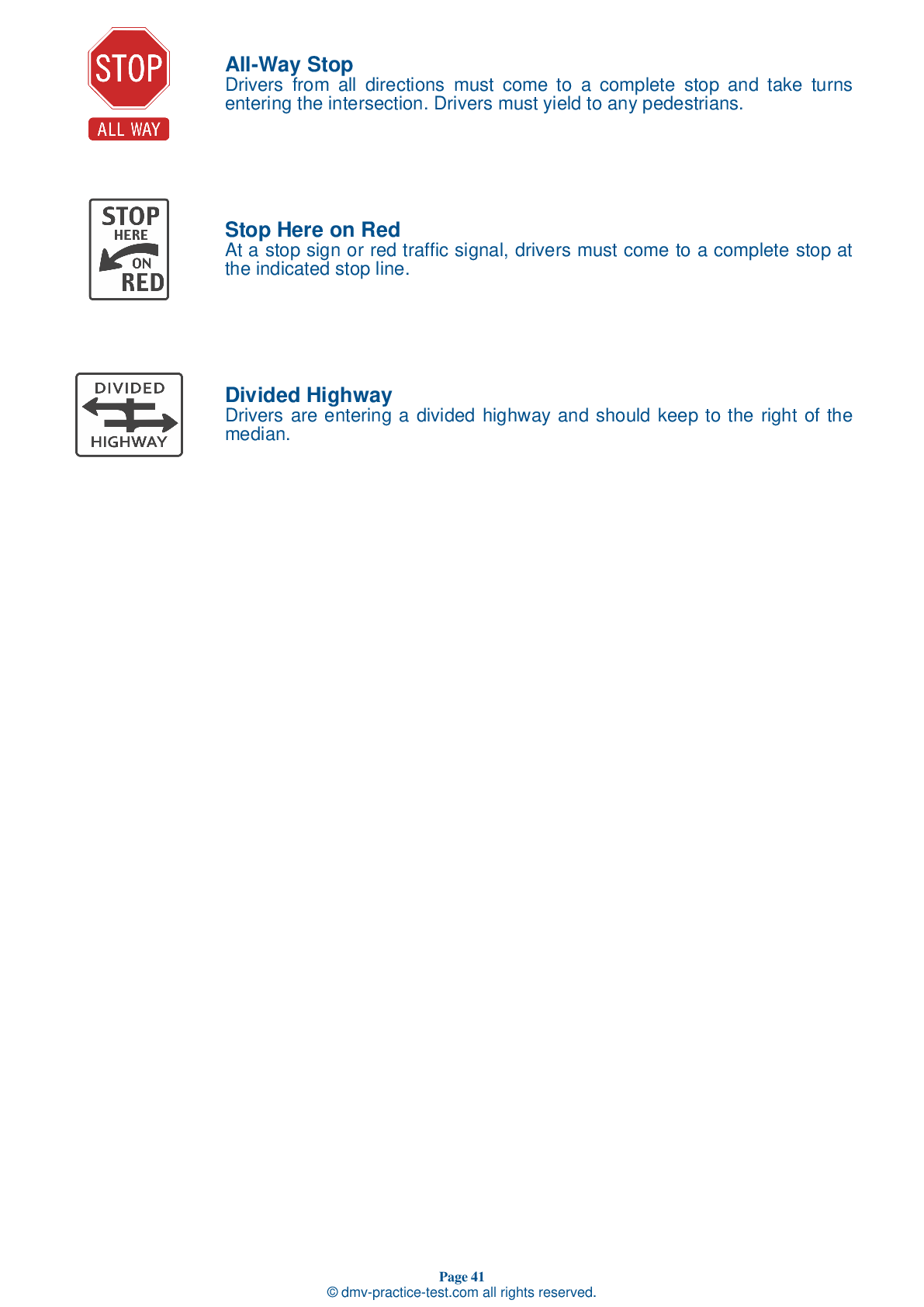FREE Colorado DMV Practice Test #13 Page 4 of 4
This DMV practise tests for Colorado was just updated for January 2025. It includes questions based on the most important traffic signs and limitations from the Colorado Driver Handbook for 2025. To study for the DMV driving permit test and driver's licence exam, use actual questions that are very similar (often identical!) to the DMV driving permit test and driver's licence exam.
Each practise test question provides a tip and explanation to help you recall the ideas. Questions about road rules, traffic signs, and driving statutes, as well as information from the Driver Handbook, will be included in the written portion of the official DMV test.
You must properly answer 20 out of 25 questions to receive the requisite passing grade. To help you prepare for your Colorado instruction permit or driver's licence, take our DMV practise test.
The DMV exam is accessible in a variety of languages.
Using a testing aid of any kind will result in an automatic fail, and the DMV may take additional action against your driver's licence, so don't do it.
19 . You are involved in an accident and another person is injured. You should:
After an accident, do not move the injured unnecessarily. Unskilled handling can make serious injuries out of minor ones. Keep the injured warm until skilled help arrives. If there is severe bleeding, attempt to stop the flow of blood with direct pressure.
20 . You should be cautious when passing a bicycle because:
You should always be cautious when passing a bicycle because the cyclist may have to swerve into traffic to avoid an object on the road. Always be particularly careful when driving near bicyclists.
21 . When approaching a school bus stopped with its stop arm extended, drivers should:
When approaching a stopped school bus that is using its stop signal, a driver is required to come to a complete stop. They should not proceed until the stop arm is withdrawn.
22 . If another driver cuts you off in traffic, you should:
To avoid the dangers of road rage, you should never take it personally if another driver cuts you off in traffic. Just let it go and continue driving safely.
23 . Distracted driving is:
Distracted driving is extremely risky behavior that puts not only you and your passengers in danger, but also endangers pedestrians, bicyclists, and other motorists sharing the road. Focused attention on driving helps to prevent crashes.
24 . You come to an intersection that is blocked by other traffic. You should:
You cannot enter an intersection if traffic is backed up on the other side and you cannot get completely through the intersection. Wait until traffic ahead clears so you do not block the intersection.
25 . Where should your hands ideally be positioned on the steering wheel?
Both hands should be placed on the outside of the steering wheel at the 3 and 9 o’clock positions to maintain control of the vehicle. Placing your hands at the 2 and 10 o’clock positions is no longer recommended because it can be dangerous in a vehicle equipped with airbags.
See the exact questions that will be on the 2025 Colorado DMV exam.
99.2% of people who use the cheat sheet pass the FIRST TIME
LT gives us an insight on how the cheat sheet provided her with all the study questions she needed before taking her test.
Joe initially studied with the handbook and failed his test, he eventually found us online, studied and pass his test the first time around.



